Topics

In Person.Business Award

Healing with Plants: The Thomsonians of Dutchess County (1820-1850)
We use such balms as have no strife, With Nature nor the Laws of Life; With blood our hands we never stain, Nor poison men to ease their pain. The Poughkeepsie Thomsonian [1842] Now mostly forgotten, this motto once represented one of the most prominent health crazes of the 19th century. The poem advertised the Thomsonian (or “Botanic”) system of medicine in which doctors challenged conventional medical practice, instead recommending natural plant-based cures. While largely ineffective, these remedies captivated public attention, something we are all too familiar with in an age of health influencers and digital cures. Dutchess County, particularly Poughkeepsie, had a strong voice in the Thomsonian movement. This philosophy created a vibrant sub-culture within the County’s medical community for more than two decades, receiving state and national attention. Dr. Samuel Thomson (1769-1843), the movements founder, worked as an herbalist and botanist in rural New Hampshire. In the summer of 1790, Thomson’s wife Susanna suffered a life-threatening illness that conventional medicine was unable to cure. Turing to a plant-based remedy, Susanna eventually recovered. The following decades, Thomson developed his new medical system, testing various cures on his neighbors and children. In 1822 he released the New Guide to Health, or, Botanic Family Physician, which outlined natural remedies to common alignments. Above: Portrait of Dr. Samuel Thomson, Founder of the Botanical Health Movement. The image appears in the 1835 edition of his New Guide to Health. Thomson and his followers cultivated a personal system of bodily health in which medicine targeted the root of the problem rather than treat its symptoms. These “cures” ranged from specific activities such as the famous Thomsonian steam bath in which a patient drank a mix of cayenne pepper and laxatives while sitting in a sauna, to common herbal medicines. Ardent Thomsonianists publicly denounced doctors who practiced blood-letting and used harmful or toxic drugs such as Opium, Laudanum, and the mercury solution Calomel. These cures purported to solve illness without invasive procedures. Through natural substances—only compounds easily derived from plants—they promoted a holistic view of the human body, targeting both physical and emotional unwellness. The historic News Paper Collection in the Dutchess County Historical Society’s archive, replete with signs of this system, shows the range of these Thomsonian remedies. One notice, included in an 1836 issue of Poughkeepsie Journal advertised “syrup of Liverwort,” “Cephalic Snuff,” and “Concentrated Syrup of Sarsaparilla” all made in Thomsonian fashion with “medicinal herbs, extracts, and ointments.” Another, published in an 1841 issue of the Poughkeepsie Telegraph, claimed that all-natural vegetable pills sold in every town in Dutchess would cure any fever, “Bilious Cholic, Dypensia, heart burn, and Female Weakness.” These local examples aptly demonstrates both the range of uses and the variety of material claimed by the Thomsonianist. Through cures like this, the movement attempted to empower individual health. Under the Thomsonian system, patients had full control over the administration of treatments. Informally trained practitioners and local Thomsonian publications could recommend cures that could be purchased at Thomsonian stores, but nothing was prescribed. Thus, easily applied and widely applicable cures had the greatest appeal. The movement grew as stories of miraculous cures spread throughout the county. Outside of New England, New York had the largest community of Thomsonianists, and Poughkeepsie functioned as a locus for the state’s Thomsonian movement during its formative years. Indeed, as the Poughkeepsie Eagle noted in 1837, the city was quickly becoming the meeting place of Thomsonian medical conferences and the State’s Thomsonian Medical Society. The most prominent local Thomsonian was Thomas Lapham (b. c.1780). Lapham ran a clinic, store, and school for the new systems treatments on the North end Catherine Street in Poughkeepsie. In May of 1838 Lapham along with local businessman A. H. Platt printed the inaugural issue of the Poughkeepsie Thomsonian a bi-monthly newspaper that detailed, remedies, clinics, and testimonies. Each issue of the Poughkeepsie Thomsonian offered to “Let a knowledge of the healing art be diffused among the people,” a nod to the broader movement’s desire to make medical knowledge public. The publication’s readership rapidly expanded, distributing thousands of papers, reflecting the movement’s success in the county with dozens of practicing offices and several Thomsonian societies. The zenith of Dutchess Thomsoniansm can be seen in medical publications where the Thomsonians of Dutchess County gain national attention. In 1840, the editors of the Poughkeepsie Thomsonian—facing harsh criticism over the validity of the medical system—called for the creation of an informative almanac. Originally used as a tool to chart stellar movements and weather, by the 19th century almanacs were full of informative articles that often looked at personal health, farming, and history. Their reputation for credibility made them the most popular serial publication after newspapers. Lapham and Platt called for a national publication based in Poughkeepsie titled the United States Thomsonian Almanac (or Poughkeepsie Thomsonian Almanac). In his appeal, Lapham described almanacs as “powerful auxiliaries [for] advancing the Thomsonian system.” During a meeting of notable practitioners later that year Poughkeepsie’s request was accepted. While several other communities already had established and successful almanacs, Thomsonianists in Poughkeepsie distinguished their book by adding several new cures that existed outside of Thomson’s system. They even provided a detailed history of several. In doing this, they promoted unapproved herbs which they claimed better regulated the body’s blood and had a wider historical use. Left: Title page of the United States Thomson Almanac published in Poughkeepsie, 1840. Image courtesy of Heritage Auctions. The movement’s founder declared the United States Thomsonian Almanac dangerous, claiming the additions would harm any who used them and had no place in the medical system. However, the damage had already been done as Lapham and Platt shipped thousands of copies throughout New York and the country. Amongst practicing Thomsonists the book received high praise. The Botanico-Medical Recorder in Cincinnati, Ohio deemed it “admirably well calculated” and called for all Thomsonians in the West to “exert himself to circulate this almanac.” Despite its success, issues with nonconformity prevented further publications of the almanac. However,
Posted in: Decoding Dutchess Past, Decoding Dutchess Past, For everyone
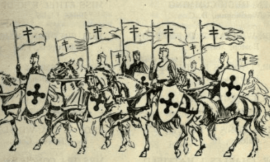
The Knights of Dutchess County
Each June marks the end of another academic year, and students throughout Dutchess County celebrate advancements in their education. A display of pins donated to the Dutchess County Historical Society by Marjorie Mangold in honor of her late husband reminds us that just over a century ago thousands of students shared this excitement through a unique end-of-the-year ceremony: investitures of Health Knighthood. The pins in the Mangold Collection, brought together by Harold Mangold Sr. and Jr. depict intriguing scenes of knights charging into battle or fighting dragons. On the border of each rests the phrase “Modern Health Crusade.” Once proudly worn by student “Crusaders” throughout the county, these pins speak to a complex history of children’s health education. The Modern Health Crusade (MHC) was a youth health education curriculum that began in 1915 to combat the spread of tuberculosis. The program lasted into the early 1930s and was taught in schools across the nation, Europe, and Asia. The Crusade succeeded in America during WWI, with one million students enrolled by 1919. Its popularity grew in the post-war period, climbing to well over three million active participants by 1923. First developed by National Tuberculosis Association (NTA), the HMC sought to cultivate hygienic and moral values. These values, deem by the HMC “health knighthood” or “health chivalry,” intended to mold children into good citizens able contribute to wartime preparedness. The movement’s founder Charles Mills deForest (1878-1947) called this the “Crusade Method of Health Training.” Above Left: Knight Pin; Depicts King Arthur knighting a Health Crusader with Camelot in background. Above is the National Tuberculosis Associations cross, a “K” for “Knight,” and a Health Cross. Above right: Squire Pin; Shows a horse and squire bearing a shield with the cross of the National Tuberculosis Association. Health Cross floats above. DeForest spent his career campaigning for children’s health education; he served as a field secretary for the American Red Cross Seals Division and the NTA. Throughout his work, he regularly noted that children struggled to adapt hygienic practices. DeForest posited that “good health” depended on students’ self-motivation. Therefore, he envisioned a curriculum that appeared as “fantasy game” which engaged children from kindergarten to 8th grade, charting their progress each term. In no less than four years, students moved through different knightly ranks. Beginning as a squire, a student became a Knight, then a Knight Banneret, and finally a Knight Banneret Constant. Advancement could only be obtained throughout the school year by the completion of “Crusade Chores.” These tasks, listed on a proscribed chart, ranged from hygienic activities such as “I washed my hands before each meal” to more aesthetic ones such as maintaining trimmed nails or hair. Each day the program required parents and teachers to sign off that the child had done these duties. “Chivalrous” students completed seventy-two chores a week, and after a year of living “chivalrously,” they were awarded the next rank. While deForest’s program was rigorous, he truly expected children to enjoy participating. In an article defending his methodology, he noted that, “Every child likes to play… He likes to play that he is grown, and to do something worthy of a grown-up.” Through play, the program reinforced “good health” with a tangible system of growth. “Health chivalry” sought to foster play through material rewards and competitions. This emphasis on recreation distinguished the program’s curriculum from other educational systems at the time. It attempted to alter methods of teaching rather than the information taught. A manual for teachers and nurses published by the NTA outlined how to include fantasy stories, songs, and crusade pageants. These elements culminated in the knighting ceremony, during which successful students moved to subsequent ranks. Dressed in handmade crusading outfits, students would gather singing Health Crusader songs as the teacher knighted students. During these celebrations, pins—like those in DCHS’s collection—were attached to the knight and to be worn during the following school year. Left: 1920 Knight Banneret Pin; Image of a mounted knight, holding the standard of the knight banneret with the letters “K” and “B” on either side of the Health Cross, the horse bears the National Tuberculosis Cross on flank. This appeal to competition was expressed in the schools and communities. The pins intentionally served as a physical sign of students’ position over their peers. As the NTA outlined, this disparity created a “visible daily reminder” of individual accomplishment which should motivate the student body to work harder. The MHC also granted students the opportunity to compete directly in national and inter-city tournaments. Schools in Beacon, Hyde Park, and Rhinebeck were the first in the nation to sign up to participate in the 1919 inaugural National Health Crusade Tournament where students participated in health and physical fitness drills. No Dutchess County school won the coveted pendant that year, but they continued to compete in the following tournaments. Indeed, the Health Crusade found a particularly strong voice in Dutchess County. An article a November 1919 issue of the Miscellany News—Vassar College’s student-run newspaper—noted that on the 25th of October, students from public and private schools in Poughkeepsie met at the Liberty Theater to watch a showing of the “Modern Health Crusade” movie. The children were so stirred by the film that the police present need to uphold “the standards of law and order.” The excitement of the students speaks to the program’s effectiveness. Its national success, in part, was propelled by Vassar College President Henry Noble MacCracken (1880-1970). MacCracken founded the Junior Red Cross of America in 1917. The new organization soon partnered with the NTA, heavily promoting the Modern Health Crusade. Under MacCracken’s leadership, Vassar College became a primary mode of outreach. A notice in the Poughkeepsie Eagle from February of 1919 remarked that Rhinebeck schools received lectures about the Crusade from Vassar’s Four-Minute-Girls, mirroring the wartime Four-Minute-Men whose spoke about war effort. Dutchess’ Collegiate involvement also spread nationally as NTA targeted Vassar seniors for executive positions at their headquarters in Philadelphia and as nurses throughout the country. By 1930 however, deForest and
Posted in: Decoding Dutchess Past, Decoding Dutchess Past, For everyone
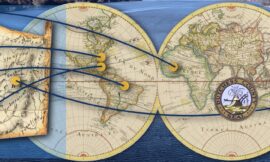
Pre-Civil War Maritime Adventure
Dutchess County Free Black Communities:Opportunities & Risks of Maritime Adventure Before the Civil War We are grateful for the ongoing support of the Dutchess County Government in its sponsorship of this program and our Virtual Event Space for Black History Month, 2024. This program is different from our regular programs in that it is more of a sampler of emerging findings that relate to maritime activities of the pre-Civil War free Black community of Dutchess County. Books like Blackjacks and Sailing Toward Freedom have been opening up interest and dialogue in the maritime Underground Railroad and broader maritime life and work of the Black community in America’s first century. With a view to encouraging and inviting others to join in the work of “discovery” DCHS offers this sampler of emerging stories. ~ Bill Jeffway, February, 2024. One hour video documentary program: A few program highlights: We examine the dual water and inland routes, and dynamic of maritime opportunities and risks Expanding our understanding of the free Black community of Baxtertown Verbatim script:Downloadable pdf. Family histories written by descendants: Other topics related to local Black history Silent Sentinels of Local Rhinebeck History Black History DCHS Yearbook Encore Edition
Posted in: African Heritage
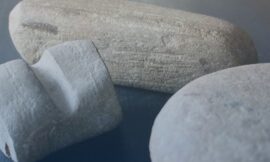
American Indian Heritage
Recognizing American Indian Heritage Month By Bill Jeffway A version of this article appeared in the November 15, 2023 Northern/Southern Dutchess News / Beacon Free Press. While not in a position to explain the full history of local Indigenous Peoples (see recommendations at the end of this article for that), as a way to recognize American Indian Heritage Month, we will introduce you to some of the Indigenous Peoples who lived here locally in the nineteenth century. We are cautioned in the 2010 book, “Firsting & Lasting, Writing Indians Out of Existence in New England” by Jean M. O’Brien, that the myth of the disappearance of the American Indian and the claim of Europeans to be the “first” to do things, like discover the Hudson, are based on an erasure of fact-based historical record. This began with James Fenimore Cooper’s 1826 book, The Last of the Mohicans, and remains a popular storyline, although not accurate. This provides short profiles of Indigenous People’s encountered in the documentation of our local history. Daniel Nimham Daniel Nimham (ca. 1724–1778) remains the most prominent American Indian associated with New York’s Hudson Valley and the American Revolutionary War. In addition to military service, he argued in courts for the return of land fraudulently taken by the Philipse family, part of Westchester County today. He traveled to England to argue his case to British authorities but was not successful. He died in service to the United States August 31, 1778 and is memorialized in the Town of Fishkill (see image). “Thick set Indian boy” We don’t know his name, but in DCHS Collections there is a copy of the New-York Journal of November 22, 1779, “Run away, on Saturday the 13th in Dover.. a thick set Indian boy with long black hair, about 13 years of age.” James Morehouse of Dover offered fifty dollars reward. The boy could have been enlsaved or indentured. Hannah Coshire In Frank Hasbrouck’s 1909 history of Dutchess County, he describes Hannah Coshire as the daughter of Jonah and Lydia Coshire and sister of Steve Choshire, owning a small piece of rocky land in the town of LaGrange. Hannah Coshire ied October 18, 1877 and is buried with her family in Moore’s Mills. In the 1860s and 1870s she was living with the Skidmore family as a servant in LaGrange. She was portrayed as the “last of her race” in her obituary. Henry Catskill Again in Hasbrouck’s history, Henry Catskill is described as being of the Wappinger who married and settled with local Blacks in the Fishkill hamlet of Baxtertown. Hasbrouck describes him by saying he was entirely Native in appearance, “a well-built, handsome man, with straight hair.” Susan May In Isaac Huntting’s 1897 history of Pine Plains he describes the May family as “pure Mohican Shekomeko.” From DCHS Collections we have the marriage record of Susan May to Andrew Frazier, Jr., son of a mixed-race African and European heritage. Prince Manessah or Minisee Again we rely on Huntting who explains that Manessah sometimes Minisee is an “Indian name.” “Prince Quack Minisee” is enshrined in a 1935 New York State historical marker saying he was an Indian medicine man. Research shows he may have been Black, in part or in whole, the name Quacko a relatively common name from Africa meaning “born on Wednesday.” He went on to Michigan with his sons in the late 19th century, and there the family became a widely-known and highly regarded frontier farming Black family, the Minisee family with descendants we’ve contacted and spoken to recently. “Louisa” Given her age and Florida birth, It seems very likely that Louisa was brought back from her native Florida by Nathan Darling of Rhinebeck. She shows up as sixteen years old and living in the Darling household as a servant. Darling was a Captain in the 2nd Dragoons during the Seminole Indian wars in the 1820s and 1830s.. He appears to have returned from Florida with a teenage Louisa who went on to marry a Black man, son of former slaves, and lived on Rhinebeck’s Oak Street. John Wannuaucon Quinney From DCHS Collections we have the hotel book register of the Poughkeepsie hotel and find that the John Quinney (1797-1855) who registered as a visitor there was none other than the most notable of Mohican leaders of the 19th century. He is registered as from Wisconsin which is where his people were “relocated to” from the area of the Hudson Valley. His visit may relate to the fact that then US Senator Nathaniel P. Tallmadge was from Poughkeepsie, as Tallmadge’s
Posted in: Decoding Dutchess Past, For everyone
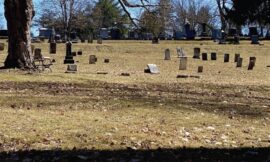
AfAm Burials Rhinebeck
Below: The story of Andrew Frazier, the ancestor. The only Black family with a large plot. Adjacent to and facing, but not technically within, “Colored Section E.” Below: Images and profiles.
Posted in: African Heritage, For everyone, Towns

Guide to the Study of Local Black History
Starting Places People Places Things Words from the past Newer Perspectives Other Starting Points The Walter M. Patrice Collection focuses largely on the history of the Smith AME Zion Church in Poughkeepsie, which through Mr. Patrice’s efforts was listed on the national historic register. Although unable to part with the photo album, Mr. Patrice allowed DCHS to take photographs and use the images from his mother’s family’s photo album. In most cases, his mother was not able to identify specific individuals (aside from her father, Jasper Jackson) but she confirmed that it is the family album of Henry and Alma Jackson of the Town of Milan. Below right are some striking images by Reuben Van Vlack of men preparing to serve in World War One in 1918.
Posted in: African Heritage, For everyone
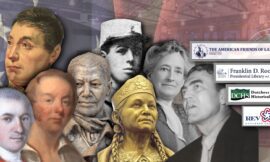
1824: Lafayette in Dutchess County
Big Moves & Intimate Gestures. Why Lafayette’s approach to equality has meant so much to so many. Below is a continually evolving concept that looks at Lafayette through the hearts & minds of those in his 1824 diverse, record-size audiences (and later audiences well into the 20th century) who were at greatly varying degrees of success in realizing the American promise of equality. An in-depth look here: Click full screen icon bottom-left for best view A quick summary below: September 16, 2024 will mark the 200th anniversary of Lafayette’s visit to Dutchess County’s Poughkeepsie and Staatsburg — and Columbia County’s Clermont and Hudson. September 19 will mark the same anniversary for his visit to Red Hook and Fishkill Landing. Part of a 13-month tour of all 24 states, he was the “nation’s guest” at the instigation of President James Monroe, at the invitation of Congress. They sought to rally and unify the country as it approached its 50th anniversary: July 4, 1826. Monroe’s sense that time was running out was prescient. Both John Adams and Thomas Jefferson died on that day. Monroe died July 4, 1831. Lafayette died in 1834 in France. Called a man of two worlds because of his role in the 1776 American Revolution and the French Revolution at the end of the following decade, he was only 19 years old when Congress made him a Major General. In addition to citations for bravery and effectiveness in the military, he contributed his personal wealth, and persuaded the King of France to formally and actively support the American cause. Green indicates public events. Blue indicates private visits. A firm commitment to truth. Big moves & intimate gestures. Toward the end of his life, Lafayette called for a strict adherence to truth. He said that moderation is not the average between two points, but a firm grip of the truth. “When it is said that four and four make eight and an extravagant person pretends that it makes 10, is it more reasonable to maintain that four and four make nine? No, true moderation is discovering what is true, and firmly abiding by it.” Nowhere is this more evident than his views and actions and commitment the idea that all are created equal. To Lafayette, all meant all. In Lafayette we find a very distinct combination of big moves, such gaining the support of France in the American cause, or his own personal support of the same, and small gestures, like kissing the hand of Marie Antionette to calm an angry crowd, or the tip of his hat to an enslaved Kentucky boy (Lewis Hayden shown above) who said that inspired him to become the nationally known abolitionist that he was. American Indians. Big moves: Lafayette assisted the Oneida Nation, America’s ally during the Revolution, with fortifications of their settlement and persuaded them to send 47 of their soldiers to join the Continental Army. They gave him the name Kayewla, or Great Warrior. Small gesturees: Not seeing any Oneida on his June 10, 1825 visit to Utica, a former Oneida stronghold, Lafayette asked his hosts about them, surprising them with the request. When the Oneida came, they had a private audience with Lafayette that he had not granted others. Free and enslaved Blacks: Big moves: Lafayette enlisted James Armistead, an enslaved man in Virginia who had earned a temporary reprieve from his owner, to became an invaluable double-agent spy, infiltrating the highest levels of the British military. Small gestures: but was returned to being enslaved at the end of the war and was denied a pension for lacking a combat role. Lafayette successfully personally petitioned congress on both accounts. White working-class and poor: Big moves: There is less of a direct connection, but an important one nonetheless. For much of his tour, Lafayette travelled with a close friend, Frances “Fanny” Wright. Within a few years, she be so aligned to the Working Men’s Party that the party became known as the Fanny Wright party, and its candidates Fanny Wright men. Small gestures: The Poughkeepsie Telegraph reported that at Forbus house, “We observed among [the crowd] an old revolutionary soldier bearing the marks of poverty and hardship, but whom the general recognized. And it was gratifying to see with what cordiality they shook hands. The old soldier was obliged to yield to the pressure of the crowd and passed off with his eyes sparkling and his countenance lighted up, and was evidently inspired with a new glow of life.” Fanny Wright became close to Lafayette immediately upon meeting him in France in 1821. She travelled with him on a good portion of his 1824/1825 tour including a stay with Jefferson at Monticello. She went on to become associated with the Workingmen’s Party. Lafayette penned a successful letter of support in James Armistead’s request for freedom, which had prior been denied. When Lafayette arrived in Utica in 1825, he insisted the Oneida be invited, who he granted. aprivate audience.
Posted in: 18th Century, For everyone, Veterans

NYS Abolition
“What to the slave is the 4th of July?” At the heart of Frederick Douglass’s 1852 pointed question was the unmistakable irony that the United States was founded on the 1776 premise that all are created equal. When Alexander Hamilton successfully led New York’s US Constitutional Convention in Poughkeepsie in 1788 to endorse joining the union, the three-fifths clause was embedded to accommodate the institution of slavery. This timeline is meant to help us look at some of the local persons and milestones leading up to that date, and eventually leading to the complete abolition of slavery, guarantee of Citizenship, and guarantee of equal treatment under the law through the 13th, 14th, and 15th US Constitutional amendments that were all in effect in 1870. 2027 /1827 July 4th, 2027200th Anniveersary of the end of slavery in New York State. July 4th, 2027 marks the 200th anniversary of the end of slavery in New York State The relief of the end of slavery in New York State in 1827 was greatly tempered by the purely racially motivated 1821 voting restrictions requiring property ownership for Black men only, and the fact that the United States was entering a period of decades of what Abraham Lincoln correctly described as a divided house that could not stand. With a “free north” and a “slave south,” Dutchess County became and important route on the Underground Railroad, with an inland route and a river-oriented route. 2026 JULY 4, 2026The premise and promise that all are created equal began a series of smaller revolutions continue today. 1776 Premise "All Created Equal" The great abolitionist leader, author, and speaker, the former slave Frederick Douglass, famously penned a critique entitled, “What to the slave is your 4th of July?” The 1776 premise that “all are created equal” was followed by the adoption of a US Constitution that literally defined inequality, stating that slave states like New York, could have 3/5ths of the Black population counted toward Congressional representation and the Electoral College for electing the US President. Poughkeepsie, of course, was host to the New York Convention in July of 1788, at the site of the current court house, when New York State, with the smallest margin of any state, agreed to join the United State. 2025 DECEMBER 31, 2025250th Anniversary of the Death of General Montgomery 1775 Death of Montgomery: Whose Freedom? The tragic December 31, 1775 death of Rhinebeck’s General Montgomery in the Revolutionary War is captured in this iconic painting by Trumbull. The event came to symbolize the profound personal sacrifices made by all levels of society during the war, on behalf of freedom. But whose freedom was being secured? In the 1940 Rhinebeck Post Office murals painted by local artist Olin Dows, we see a depiction of an enslaved man making bricks for Montgomery’s estate, Grasmere, which stands today. Also shown here, the Rhinebeck census for 1820 indicating that the widowed Janet Livingston Montgomery, who never remarried, had 12 enslaved men, women and children at her home in Red Hook, Montgomery Place. CLICK FOR DCHS HORIZONS: REV 250 2024 SEPTEMBER 16, 2024200th Anniversary of the Arrival of the Nation's Guest, the Marquis de Lafayette. 1824 Visit of Lafayette: NYS Was a Slave State As the nation’s guest, the American Revolutionary War hero from France, the Marquis de Lafayette, stepped onto the dock at the foot of Main Street, Poughkeepsie in the early morning of September 16, 1824. Newspapers reported it was the largest gathering of men, women, and children — civilian and military — in the village’s history. We know that among the cheering public would have been persons of color, many of whom were enslaved as NY State would not abolish slavery until July 4, 1827. Three years earlier, in 1821, New York instituted a property requirement for a man to be eligible to vote that applied only to men of color. They would have been aware of Lafayette’s outspoken advocacy of the abolition of slavery, his collaboration with a former enslaved man who became a spy and American war hero, and his specific actions freeing the enslaved. The emerging program, DCHS Horizons: the Marquis de Lafayette, will culminate in at event on the 200th anniversary at Revel 32, Cannon Street, Poughkeepsie on the morning of Monday, September 16, 2024. More on that in time. CLICK FOR DCHS HORIZONS: LAFAYETTE 1824 TO 2024
Posted in: African Heritage, For everyone

